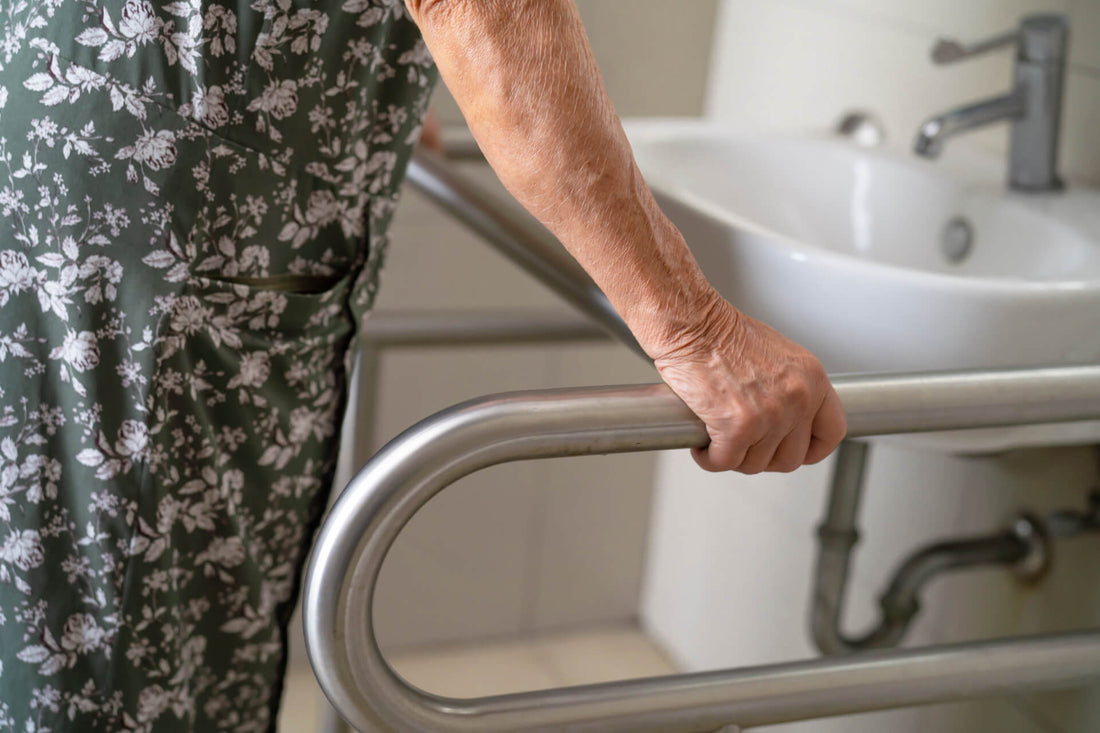Every year, many seniors face the risk of falls, which can lead to significant injuries. As family caregivers, ensuring the safety of our elderly loved ones is a top priority. By understanding and implementing fall prevention devices for seniors, we can create a safer environment and reduce the likelihood of falls.

Understanding the Importance of Fall Prevention
Falls are a leading cause of injury among older adults. As we age, our physical strength, balance, and coordination can decrease, increasing the risk of falling. The consequences of a fall can range from minor bruises to severe injuries, such as hip fractures or head trauma.
Why Seniors Are More Prone to Falls
There are several reasons why seniors are more susceptible to falls. These include muscle weakness, balance issues, vision problems, medications that cause dizziness, and environmental hazards in the home. Understanding these factors can help us address them effectively.
Types of Fall Prevention Devices for Seniors
There are various fall prevention devices for seniors that can be used to enhance safety. These devices are designed to provide support, improve balance, and reduce the risk of falls.
Grab Bars and Handrails
Grab bars and handrails are essential in areas like bathrooms and staircases. They provide support and stability, helping seniors maintain their balance while moving around the house.
Non-Slip Mats and Rugs
Slippery surfaces pose a significant fall risk. By placing non-slip mats in bathrooms and using rugs with non-slip backing, we can reduce the likelihood of slips and falls.
Walking Aids
Cane or walker aids provide support for seniors with balance issues. These aids come in various forms, such as canes, walkers, and rollators, each offering different levels of support.
Bed and Chair Alarms
These alarms alert caregivers when a senior attempts to get up from a bed or chair, providing an opportunity to assist them and prevent a potential fall.
Creating a Safer Home Environment
Making the home environment safer is crucial in preventing falls. Simple modifications can significantly reduce the risk of falls.
Organizing the Home
Clutter can increase the risk of trips and falls. Keeping the home organized and free of obstacles is essential. For tips on how to organize an elderly home for safety, visit organize home.
Lighting
Adequate lighting is vital in preventing falls. Ensure that all areas of the home are well-lit, especially staircases and hallways. Consider using nightlights for added safety during nighttime.
Flooring Considerations
Uneven floors and loose carpets can be hazardous. Secure carpets and repair uneven flooring to prevent trips. For advice on preventing falls from bed, visit prevent bed falls.
Staying Active and Healthy
Encouraging seniors to stay active can improve their balance and strength, reducing the risk of falls. Regular exercise tailored to their abilities can be beneficial.
Balance and Strength Exercises
Exercises such as tai chi, yoga, and balance training can enhance stability and muscle strength, making seniors less prone to falls.
Regular Health Check-Ups
Regular health check-ups can identify potential issues, such as vision problems or medication side effects, that could increase fall risk.
Technological Advancements in Fall Prevention
Technology offers innovative solutions for fall prevention. Wearable devices and smart home technology can enhance safety and provide peace of mind.
Wearable Devices
Wearable devices, like fall detection watches, can alert caregivers and emergency services in case of a fall, ensuring prompt assistance.
Smart Home Technology
Smart home devices, such as motion sensors and voice-activated assistants, can help monitor movements and provide timely alerts.
Conclusion
By understanding the risks and implementing fall prevention devices for seniors, we can create a safer environment for our elderly loved ones. These devices, combined with a proactive approach to safety, can significantly reduce the risk of falls and improve the quality of life for seniors.

Frequently Asked Questions
What are the most effective fall prevention devices for seniors?
The most effective devices include grab bars, non-slip mats, walking aids, and bed alarms. These devices provide support and help minimize fall risks.
How can caregivers assist in preventing falls?
Caregivers can help by organizing the home, encouraging exercise, and ensuring regular health check-ups for the senior.
Are there technological solutions for fall prevention?
Yes, wearable devices and smart home technology can enhance safety and provide alerts in case of a fall. For more on creating a safe home, visit safe home tips.
This article contains affiliate links. We may earn a commission at no extra cost to you.






